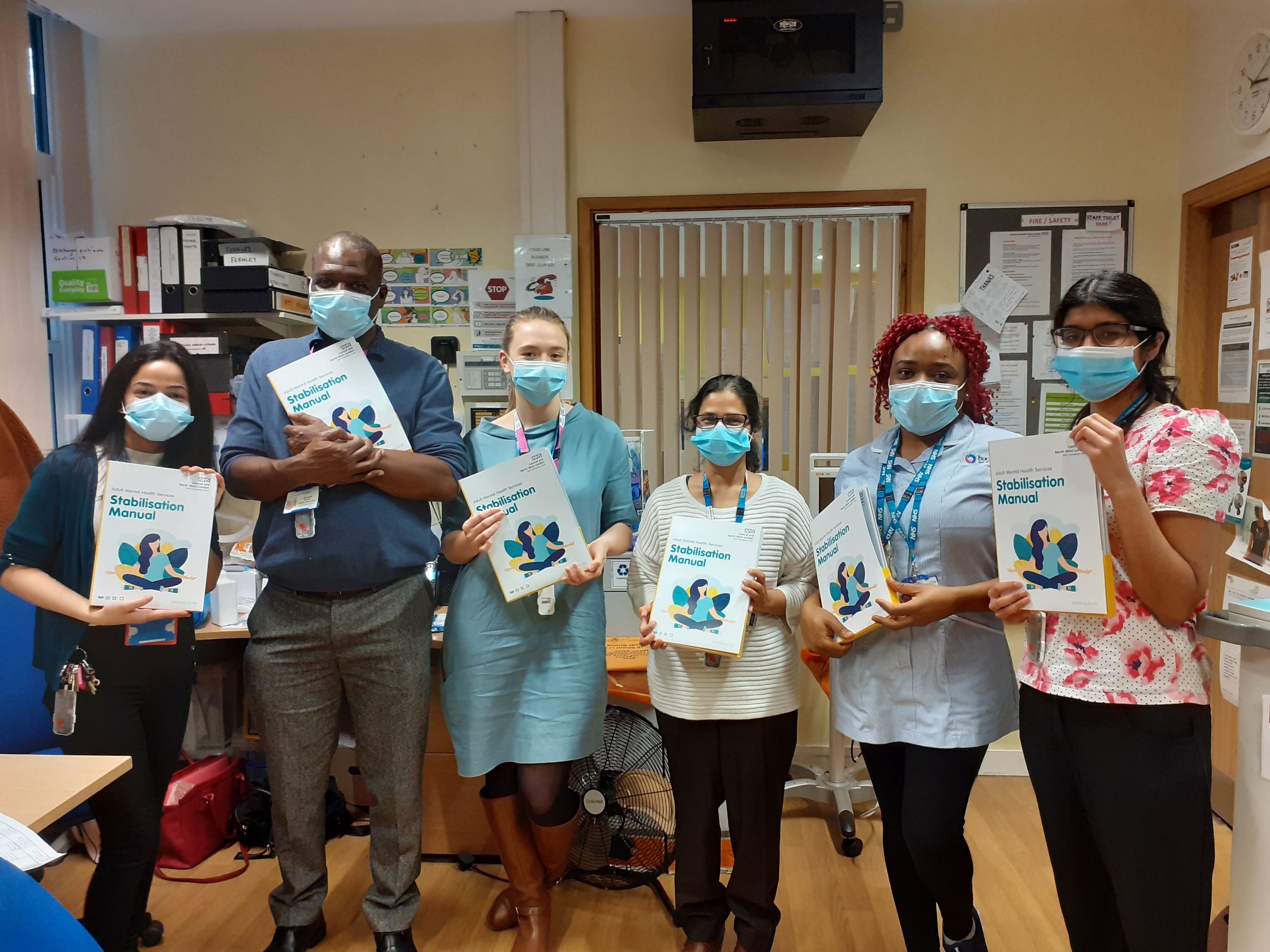Posted on: 11 January 2021
TIA Stabilisation Manual and Website Launch
Today (11 January 2020) marks the Trustwide launch of CNWL’s Trauma-Informed Approaches (TIA) Stabilisation Manual and website.
Stabilisation is the first phase of intervention from a trauma-informed perspective, from which distress (or mental health difficulties) are viewed as understandable responses to potentially very difficult and / or adverse life experiences. Stabilisation is all about learning to cope with distress more easily, keeping safe, and gaining stability and control. The Stabilisation Manual has been designed for both service users and staff, and comprises an introduction to TIA alongside 10 distinct stabilisation workbooks. Each workbook introduces a new evidence-based stabilisation skill (for example; mindfulness, self-compassion and breathing) and can be worked through with the support of others (for example, staff) or be self-guided. It was developed with permission from the Cwm Taf Morgannwg University Health Board’s Stabilisation Pack, who we would like to thank for their support and contribution to this project.

Ferneley Ward Staff, Northwick Park Hospital
CNWL’s Stabilisation Manual was developed as part of the wider TIA work taking place in CNWL inpatient and acute services, that Dr Faye Nikopaschos (Clinical Psychologist) and Gail Burrell (Deputy Director) have been leading on for the last two years. This work started on Eastlake and Ferneley adult inpatient mental health wards, at Northwick Park Hospital (Harrow), where in addition to our Stabilisation Manual, a weekly trauma-informed staff training program was also developed and embedded alongside the practise of Team Formulation – a space for staff to better understand the difficulties services users may present with as well as how to best support the people we care for from a trauma-informed perspective. Initial evaluation and outcomes for TIA at Northwick Park Hospital have been very positive, with reductions seen in the use restraint and seclusion on the inpatient wards, and positive feedback received from both staff and service users:
“I think TIA makes a real difference on the ward. This admission has been so different for me exactly for this reason. The groups inspired and supported me to make a future plan and stick to it. This, for the first time in a very long time, gives me purpose and hope.” (Service User)
“This framework has helped us to understand our patients as individuals… and address what’s behind the diagnosis, not the diagnosis itself.” (Staff)
“People are encouraged to learn how to cope with stress through some very helpful techniques.” (Service User)
”It helped me to understand more. Rather than thinking “oh this person is getting angry what are we going to do” talk about it… ask “what’s happening, why do you feel this way” and then we can use different strategies when we understand.” (Staff)
Work is currently underway (at varying stages of development) to extend TIA to inpatient services in the boroughs of Kensington and Chelsea, Brent, Hillingdon and Milton Keynes, with services all working hard to develop, implement and embed TIA practices locally. In Harrow, TIA is now also being introduced to our Home Treatment and Psychiatric Liaison Services.
Following on from the success of TIA in CWNL acute services, we are now launching our TIA Stabilisation Manual Trustwide. Alongside the manual, we are also launching our official CNWL TIA Website, to provide you with trauma-informed information and resources as well as keep you updated on the trauma-informed work we are currently doing across our CNWL services. The website and stabilisation manual can be accessed here.
We’d love to hear your feedback so please do let us know what you think of the manual and new website, by using the feedback facility on the CNWL TIA website.